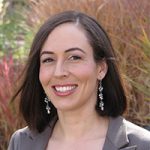 Stephanie Strakbein earned her MS in biostatistics from Oregon Health and Science University in September. Last year, she helped establish the Portland ASA Student Chapter and served as its first president. Currently, she works as a senior statistician in clinical trials at Eli Lilly in Indianapolis. She plans to continue working with students as they pursue education in statistics and science.
Stephanie Strakbein earned her MS in biostatistics from Oregon Health and Science University in September. Last year, she helped establish the Portland ASA Student Chapter and served as its first president. Currently, she works as a senior statistician in clinical trials at Eli Lilly in Indianapolis. She plans to continue working with students as they pursue education in statistics and science.
Last April, I participated as a statistics “special awards” judge at the Intel Northwest Science Expo (NWSE) for middle- and high-school students in Portland, Oregon. At the time, I was a graduate student in biostatistics at the Oregon Health and Science University / Portland State University Joint School of Public Health (OHSU-PSU SoPH).
The Oregon Chapter of the ASA has been sponsoring a special award for statistics at the NWSE for 27 years and many faculty members have participated as judges. A couple of my professors sent out emails recruiting judges around the same time the students at the OHSU-PSU SoPH formed an ASA student chapter. This seemed like a great opportunity for our student members to give back and do something together to launch our chapter’s presence in the statistical community. Conveniently, the science expo/fair was held on the PSU campus in April, which is Mathematics and Statistics Awareness Month. The combination couldn’t have been better.
The way the statistics awards work at our science fair is that the volunteer team of statistics judges circulates throughout the projects. These projects are classified into one of many areas: biology, physics, chemistry, computer science, etc. However, there is no special designation for statistics. The judges attempt to identify any project that uses statistics in a meaningful way.
The next step is for the judges to interview the students and ask questions about their use of statistics. You may be surprised by how many students who used statistics were not really aware of it; it was just one tool of many in their project. We sought to determine whether they truly understood the purpose of the statistical tool applied and why statistics are necessary when interpreting results. Moreover, our goal was to encourage these students to recognize the importance of the statistical component to their work and science generally and to open them up to the possibility of pursuing statistics more formally in college and beyond.
The young people we talked to were all impressive, and many of their projects were quite sophisticated. Yet these bright, college-bound students had never considered statistics as a degree or a career. I genuinely think the conversations we had opened a few minds to the greater potential of studying and using statistics in their futures.
This experience was personally rewarding and surprisingly fun, although I was hesitant to volunteer. As a graduate student, I have to juggle course work, work, family, and personal commitments in addition to overcoming imposter syndrome. However, I ultimately found that the time commitment was minimal, I was paired with experienced judges who made me feel welcome and valued, and volunteering reinforced the joy I felt in the subject I was studying.
I encourage everyone in the statistical profession to get involved in their local science fair. If there isn’t already a “special award” or statistics category offered, see if your local chapter can’t establish one. Or see if perhaps a science fair would be open to you circulating and having encouraging conversations with the students involved. You’ll be glad you did.



Leave a Reply